Buchan’s 1915 novel is hardly virgin territory for film-makers: there have been three big-screen versions, most notably one by Alfred Hitchcock. This both excites and terrifies the director of the new BBC film, James Hawes, during a break from filming in the highlands of Argyll. “There will undoubtedly be people who think it’s outrageous that we’ve remade it,” he says.
“It’s a film for which people have considerable affection and which has stood the test of time. However, if you put out Hitchcock’s 1935 version over Christmas, not a lot of families would watch it. We hope we’ll be able to bring something that will work across the generations. Hitchcock made big, entertaining films; he wasn’t creating a masterpiece to last 75 years.”
Lizzie Mickery - who wrote the well-received conspiracy thriller The State Within and Sinners, the hard-hitting drama about Ireland’s Magdalen laundries - has penned the screenplay. When she was first approached by the BBC’s controller of series and serials Kate Harwood, Mickery knew little about Buchan’s novel.
“I had a faint memory of the Hitchcock and [1978] Robert Powell films and that was about it,” she says. “I read the book and something about it grabbed me. It’s an era TV doesn’t cover that often and it’s a different kind of period piece. It’s a rattling good story. Buchan set down the template for an action adventure which anyone can identify with, but you can add your own inventions to his template.”
A hero for today
In keeping with Buchan’s novel, Mickery’s adaptation is set in the months leading up to the First World War when German spies are trying to smuggle naval secrets out of Britain. The only man who can stop them is Hannay, who stumbles across the plot and is then framed for a murder.
With spies and police hot on his trail, Hannay flees to Scotland, hoping to unravel the plot and save his country.
“Lizzie’s script is very faithful to the character of Hannay. He’s very intelligent and well mannered but also very physical,” says the producer, Lynn Horsford. Penry-Jones was her first choice for the role:
“Every generation will have its own Hannay. Hitchcock’s Hannay, played by Robert Donat, was very much of his period and Rupert’s a really good match [for today’s viewers].”
Horsford adds that Penry-Jones’ experience playing all-action spy Adam Carter in Spooks has proved invaluable: “He’s very comfortable doing many of his own stunts, which makes it much more authentic.”
Until now, perhaps. Penry-Jones’ hand is bleeding following a stunt which required him to roll down a steep bank onto a road. Is he doing a lot of his own stunt work on The 39 Steps? “Not after today, no,” he jokes.
Penry-Jones sees a crucial difference between Hannay and his Spooks role. “He’s not the sort of superman Carter is; he’s more of an everyday man who’s found himself in a difficult situation,” he says. “Hannay’s making it up as he goes along - he’s not beating up and killing people.”
In Buchan’s novel, women are noticeable by their absence. Like the writers of the previous films, Mickery has added a female lead, in this case a -suffragette called Victoria Sinclair. “I thought it would be interesting to have someone who could give Hannay a run for his money,” says Mickery. “He’s not impressed with women particularly; he only knows women as ‘the woman at home’. Victoria is very gung-ho and up for adventure. They are a tinderbox mix and there’s a great deal of humour to be had from a relationship like that.”
Victoria is played by Lydia Leonard, who appeared in BBC4 drama Margaret Thatcher: The Long Walk to Finchley. Victoria Sinclair, though, is her first lead role. Playing a pre-First World War heroine may be fresh ground but Leonard says she has been helped by the fact that Victoria is a suffragette. “It makes it much easier to play because she’s much more modern and forward thinking. She has a huge amount of energy and is very bright,” she says.
German actor Werner Daehn plays the spy, Ackerman. Does he feel typecast playing a German villain? “Probably I am, but it’s okay. There’s an expression that comes from Hitchcock, ‘The better the villain, the better the film,’” he says.
Coping with the rain
Hawes and director of photography James Aspinall were determined to shoot on film rather than high definition, which is rapidly becoming the norm for TV drama. “Film is absolutely right for this project. It has scale, big exterior locations and that’s something that still challenges HD,” says Hawes.
Appalling weather has dogged the production - which has been filmed entirely in Scotland and mostly outdoors - helping to justify the decision to shoot on film. “The HD cameras available to us on our budget are still vulnerable in difficult weather conditions. There’s no doubt that what we’ve got on 35mm is just so much more detailed. It has so much more depth of field and richness than we could have got on HD,” he says.
So much of The 39 Steps has been shot in the rain that when the sun does make a brief appearance the crew has to stop filming because the brightness of the light would not match the scenes already in the can. “You need time and space but all you’ve got is a snatched moment while the sun goes behind a cloud to shoot a scene,” says Leonard.
Penry-Jones is sheltering under a -gazebo that the highland wind is trying to blow away as the rain comes down in stair rods. “If it was a lovely sunny afternoon, this would be a great day’s filming,” he says, recalling that Robert Powell was luckier in the 1978 version of The 39 Steps: “His Hannay is walking in the sun through the moors, his jacket over his shoulder.”
The day’s weather, though, has nothing on that at Loch Katrine where the film’s finale was shot. “It pissed with rain for three days,” recalls Penry-Jones. “We put a shed on the edge of the loch for the equipment and by the end of the second day of filming it was under water,” adds Horsford. “There was so much rain running off the hills.”
The two-day shoot at the loch turned into three as the production became bogged down. “We lost a whole day, but when we finally got the wide shots there were occasions when the Scottish mists and clouds were hanging over the crags and it looked fabulously moody,” recalls Hawes.
Despite the weather, Horsford says the cast and crew have remained in good spirits. “You have to have a kind of gung-ho attitude to filming otherwise you wouldn’t do it,” she says.
Classic with a twist
Hawes is aiming to make a film that works both as a romantic caper and a thriller. “The big challenge for Rupert is that he’s got to be able to move from a moment of real jeopardy when the guns are loaded to a moment of humour and charm that is almost like proto-Bond,” he says. “I hope viewers enjoy what is a romantic adventure. It should have a lot of the energy and the sense of fun things like Bond can bring. It’s something the BBC is uniquely good at: putting a twist on a piece of classic fiction.”
For Mickery, although The 39 Steps is “huge fun, it has a serious undercurrent. It isn’t just an action-adventure caper, it’s rooted in something serious which gives it some weight. There are German spies in Britain and war is coming.”
THE 39 STEPS THE INSPIRATION John Buchan’s adventure story has spawned three films: Alfred Hitchcock’s 1935 version with Robert Donat as a suave Richard Hannay and two subsequent versions starring Kenneth More (1959) and Robert Powell (1978). “What we are making is based on the book, but also inspired by the films that have come since,” says director James Hawes. Of the three versions, the Hitchcock is his favourite: “It’s the only one that succeeded. The Kenneth More one was uncertain whether it was an Ealing comedy or some kind of spy caper. And, for me, the Robert Powell one lost the humour.” In fact, it is another Hitchcock film - 1959’s North by Northwest in which Cary Grant’s character, Roger Thornhill, is framed for murder and on the run from both the police and spies - that has most influenced crew and cast. “That’s more of a template for me than any version of The 39 Steps,” says Penry-Jones. “[Thornhill] is kind of who I’d like [Hannay] to be. That’s the best film out of all of them. It’s Hitchcock’s American remake of The 39 Steps.” |
| CREDITS Broadcaster BBC1 Producer BBC Starts 28 December, 8pm Length 85 minutes Commissioning editor Ben Stephenson Writer Lizzie Mickery, adapted from the novel by John Buchan Director James Hawes Producer Lynn Horsford Executive producer Hilary Salmon Director of photography James Aspinall Production designer Pat Campbell Make-up and hair designer Meg Speirs Costume designer James Keast Composer Rob Lane Editor Tania Reddin Principal cast Rupert Penry-Jones, Lydia Leonard, Eddie Marsan, Patrick Kennedy, David Haig, Alex Jennings and Patrick Malahide |


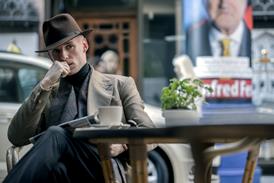




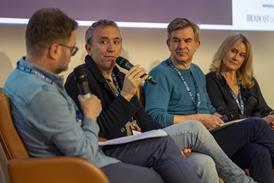
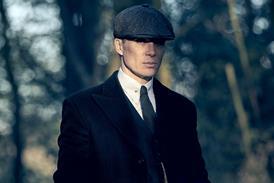
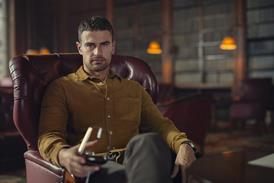

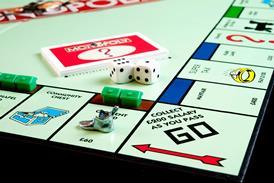
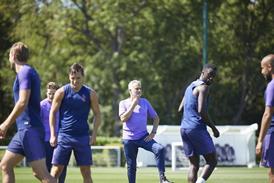
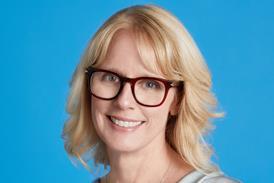
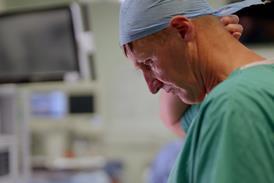
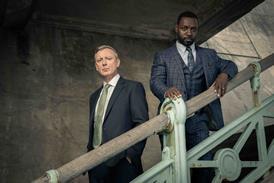
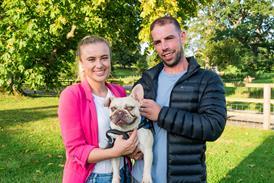












No comments yet